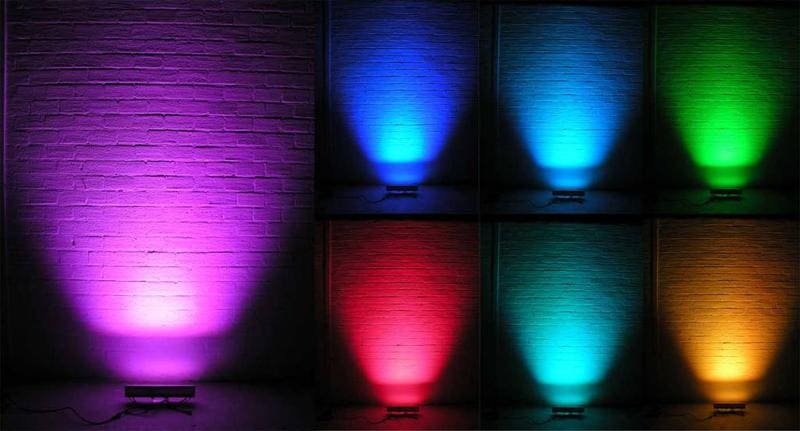A growing number of LED products are entering the market, adding to the many choices consumers already face. By 2025, 60 percent of residential lighting across the U.S. will likely be LED-based. While nearly all LED lighting choices offer energy savings, not all LED products are created equal, and LEDs may not always be the best type of lamp to use. Professor Michael Siminovitch, director of the California Lighting Technology Center at UC Davis, urges people to consider these five things when looking for the right light:
- PURPOSE
In the lighting industry, light bulbs are called lamps (not to be confused with the fixtures we set on our end tables). Lamps are generally either omnidirectional (giving off light in all directions) or directional (focusing light in one particular direction). Omnidirectional lamps include screw-base A-lamps—found in most of our table lamps. These distribute light uniformly in all directions and are ideal inside shaded lamps, wall sconces, post lights, and porch lights. Common directional lamps include those used for accent lighting (MR 16 lamps), floodlights or track lights (PAR lamps), and downlights (R lamps). With these lamps, you may need a specific angle of light. You will find this angle on the side of the lamp packaging, noted as the “beam spread” or “beam angle.” This angle will help you estimate the coverage or spread of the light.
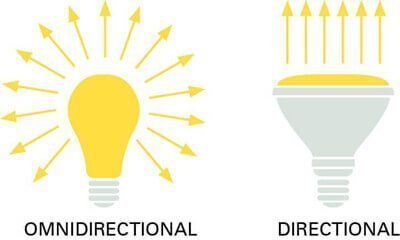
- OUTPUT
Many people are used to estimating light output based on electricity use (watts). With incandescent lamps, if you wanted more light than your 60W provided, you simply moved to a 75W lamp. Because more efficient light sources like CFLs and LEDs can generate similar light levels using fewer watts, we now need to start comparing lumens, which is the actual unit used to measure light output. Now, instead of looking for something that consumes 60W or more, you will look for a lamp that produces 800 lumens or more. As the chart to the left illustrates, the higher the number of lumens, the greater the amount of light.
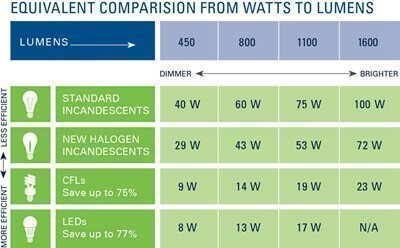
- COLOR (CCT AND CRI)
When it comes to getting the color quality you want from your lighting, there are two basic concepts to consider. The first is correlated color temperature (CCT), measured on the Kelvin scale (K). CCT refers to how warm or cool the light appears. It also influences how cool or warm a space will appear. Americans tend to prefer lamps with a warmer CCT for their homes, typically in the 2700–3000K range, but it is largely a matter of personal preference. It is important to choose a color temperature you like, then keep your lamp purchases close to that color temperature to maintain consistency. Another very important issue to consider is how a lamp renders color. The color fidelity or accuracy of a light source is currently measured by the color rendering index (CRI), which has a maximum value of 100. The CRI measurement describes how colors will appear in the light in comparison to a standard incandescent lamp. Select lamps with a high CRI for your home’s interior: 85 or above. Lamps measuring 90 CRI or above will provide excellent color rendering. Soon more LED lamps measuring 90 CRI or higher will become widely available.

- DIMMING
Dimming allows you to easily adjust light levels—and it saves energy. CFLs generally dim poorly compared to incandescent or LED lamps. No matter which type you choose, make sure the lamps you purchase are clearly labeled “dimmable.” If you are replacing track lights, downlights or accent lights, you should be aware that some transformers designed for older, less efficient light sources can cause dimmable LED lamps to flicker or dim poorly. In these cases, it is not the lamp’s fault. You can invest in LED drivers to replace your old transformers; this will also optimize the efficiency and life of your LEDs. You might also look for products labeled “flicker free” or “plug and play,” or get a kit with an integrated transformer, and consider upgrading to LED drivers later.
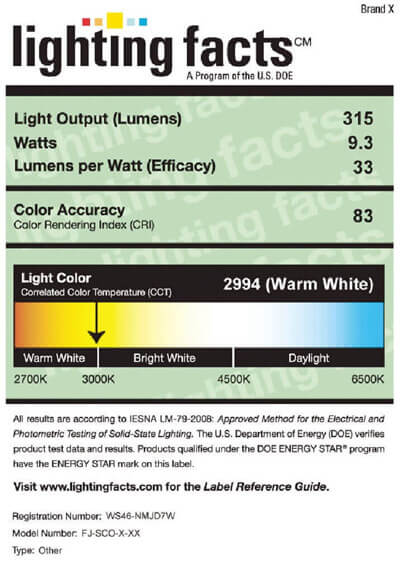
- LIFE
LED lamps last much longer than traditional light sources, but like any appliance, some are better than others. High-quality LED lamps used in the home should easily last five years or more. You can expect to get at least 70 percent of the lamp’s original lumen output, even toward the end of the life printed on the package. This is currently an industry standard, and lifetime is expected to increase in future products. When choosing LED lamps, look for at least 20,000+ hours and a warranty of at least five years. Warranted, higher-quality products may cost a bit more initially, but they are much more likely to deliver better-quality lighting and more savings over time. Anything less could fail early.
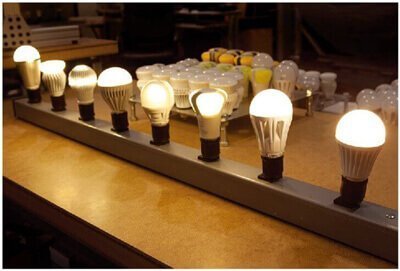
Your local utilities have some excellent lighting quality resources—and rebates—to help you compare replacement lamps and understand your choices a little better. In California, LED lamps will soon have to meet a “California Quality” standard (dimmable, with high color quality requirements, and long useful life) in order to qualify for rebates and incentives. In the meantime, many consumers may look for the ENERGY STAR label for some guidance, but it is worth noting that two lamps, both ENERGY STAR labeled, could deliver different levels of lighting quality.

